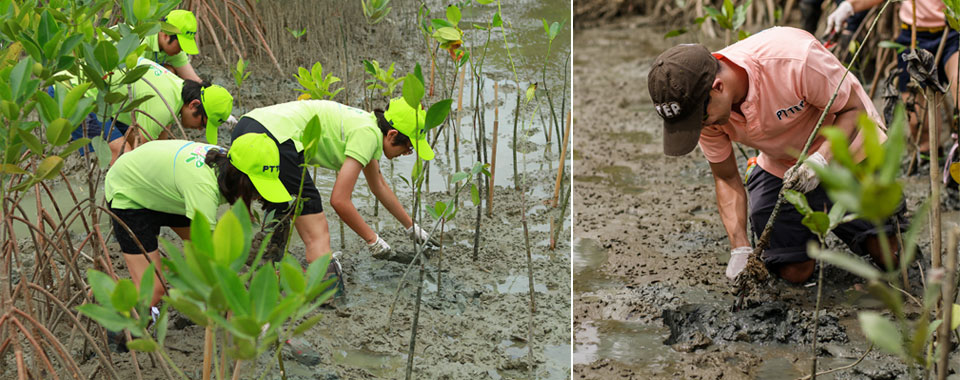

 SEARCH
SEARCH
 SEARCH
SEARCHMangrove Reforestation Project

Mangrove reforestation project targets to increase biodiversity and marine resource abundance, through the restoration of degraded mangrove forests and turning it to Thailand's coastal hatchery centers. The project sets the goal to expand mangrove forests by 45,000 rais of land to increase carbon sinks which covered 1,000 rais in 2021 and the forest is being maintained. In 2022, PTTEP received the permission to grow forests in a 4,007.15-rai area and the plantation will start in 2023. From 2023 through 2030, to meet the goal, the forest areas will be expanded every year while the maintenance will continue until 2039. In the meantime, Kasetsart University will collect data from all plots for the development of Biodiversity Baseline. A forest and environmental protection network were established in PTTEP's mangrove forest areas, to safeguard the reforested and rehabilitated forests. The project kicked start a networked effort in preserving and protecting natural resources as well as marine and coastal environment. Meanwhile, the forests act as natural carbon sinks and help increase benthic organisms.
Aside from the executives, employees and family members in the reforestation activity, the project also aims to build a network to conserve and protect PTTEP’s mangrove forests and create jobs for local people. The 45,000-rai mangrove forests are expected to adsorb at least 559,350 tonnes of carbon dioxide equivalent and increase benthos by 25% in 2030 compared to the period before project implementation.
PTTEP has carried out analysis on Social Return on Investment (SROI) of this project by measuring the social impact of the program with the financial quantification calculation (monetization). This method is intended to measure the value of the financial impact of the program that compares to the value of the impact to the cost of the program that has been invested into. It appears that the value of the SROI ratio is 3.35 : 1

PTT Exploration and Production Public Company Limited
Vibhavadi-Rangsit Rd., Chatuchak, Chatuchak, Bangkok 10900
Phone : 66 (0) 2537-4000
Fax : 66 (0) 2537-4444
Copyright © PTT Exploration and Production Plc. All Rights Reserved.

 ...the sea has become our home and so we are conscious of our responsibilities...
...the sea has become our home and so we are conscious of our responsibilities...




 PTTEP is E&P company in Thailand, exploring for sustainable sources of petroleum for the countries we operate
PTTEP is E&P company in Thailand, exploring for sustainable sources of petroleum for the countries we operate
 SIGN IN
SIGN IN






